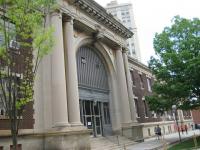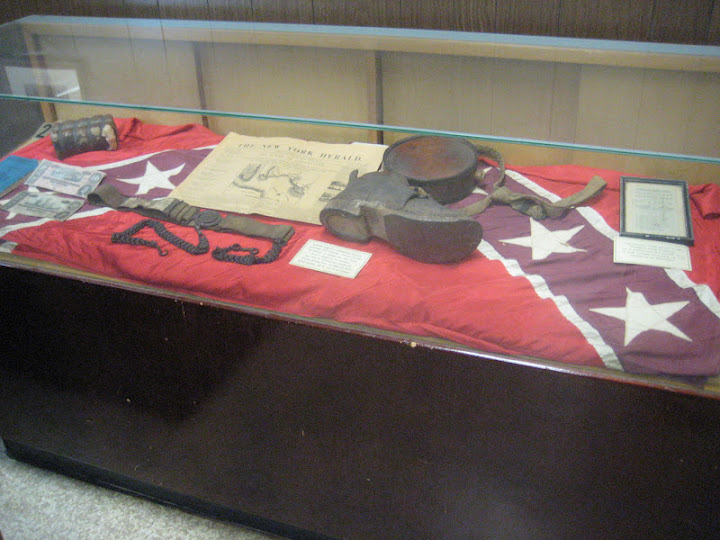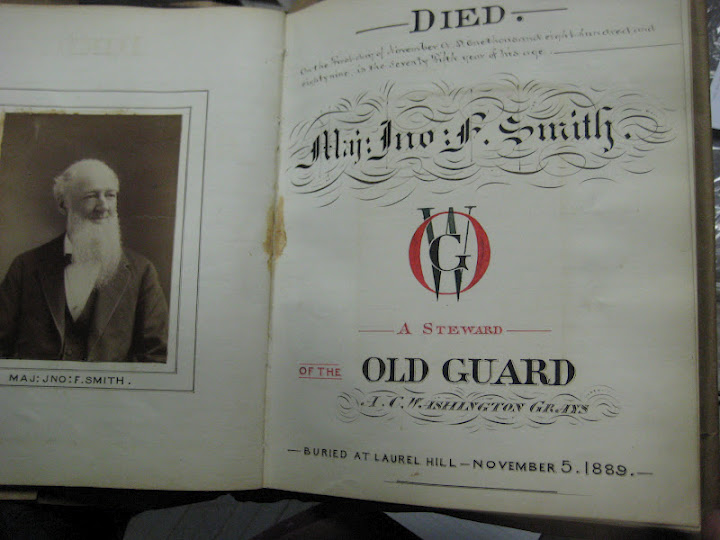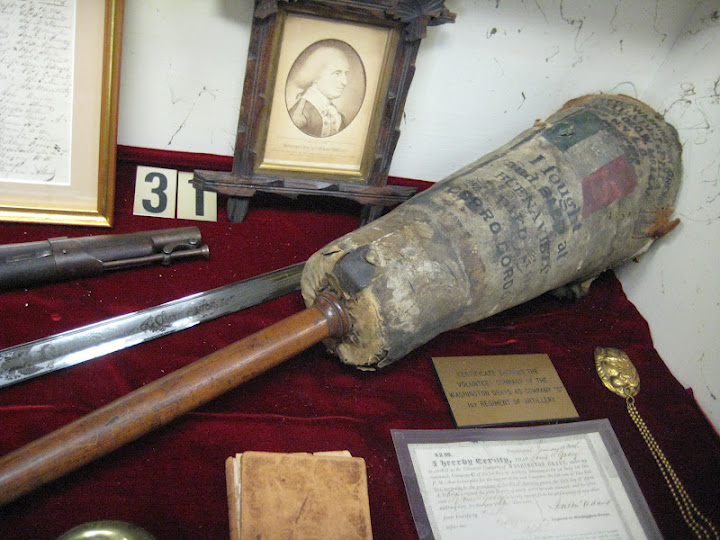The 103rd Engineer Battalion of the Pennsylvania National Guard--nicknamed the "Dandy First"--is the oldest continuously-serving military unit in Pennsylvania, and one of fewer than ten organizations whose lineage goes back to before 1747 (as verified by the Center for Military History). Did you know that a museum dedicated to the lineage of this storied regiment is housed in the old armory building on the campus of Drexel University? I certainly had no idea until I was sent to survey their archival collection. I felt like I was the "Dandy First" person to visit!
The history of the First Regiment Infantry Museum is extremely complicated and convoluted, so I fear to go into much detail here lest I propagate an inaccuracy. In a nutshell: the regiment has fought in just about every major American war except Vietnam. Although the regiment's history formally begins with the establishment of the Artillery Batallion in Philadelphia in 1777 for the Revolutionary War, the regiment traces its lineage back to groups of men who met informally in Philadelphia even before Benjamin Franklin's 1747 militia. From 1747 to the beginning of the Revolutionary War, the regiment's predecessor was a Company of Artillery commanded by Captain Jehu Eyre. This unit was increased to battalion strength and became the Artillery Battalion of Philadelphia; Eyre was promoted to the rank of Colonel and commanded the unit until his death in 1781. The unit reorganized after the War of 1812 as the Volunteer Corps of Light Infantry, Washington Grays and in 1828 again reorganized as the Artillery Corps, Washington Grays. The famous statues outside of the Union League on Broad Street were monuments to the men of their regiment.
The First Regiment Infantry Museum boasts an incredibly rich archival collection of the regiment's records. It consists of about 100 volumes of records dating from 1812 to 1970--mostly minute books, roll books, and officers' letter books, with a few equipment account books, membership lists, etc.--as well as several photograph albums and scrapbooks. The collection is an excellent resource for military history and studying the battles and incidents in which the regiment was involved. It is also a superlative genealogical gold-mine, with membership lists, identified photographs, and narratives about individuals' military service.
If the archival collection alone isn't enough to entice you, you should still go to the First Regiment Infantry Museum to see their impressive accumulation of militariana and war trophies. They have guns, knives, and uniforms from just about every war in United States History! They have a stained glass window of real Tiffany glass! They have a letter signed by General Lafayette on display! Plus, how many opportunites does one get to see a peg leg from the Mexican War? Be the "Dandy First" of your friends to check out the First Regiment Infantry Museum!
See all findinding aids from the 1st Regiment Infantry Museum.
Works Consulted:
Avery, Ron. "Glory Days May Be History: 103rd Engineers Guard Unit Worried about Future." Philadelphia Daily News, April 20, 1990. Accessed May 11, 2012. http://articles.philly.com/1990-04-20/news/25917514_1_guard-unit-active-duty-high-school-diploma.
Benson, Michael R. Email message to author. May 29, 2012.
Crowley, Dennis. "Pennsylvania's Historic Regiments: The 103rd Engineers." Accessed May 11, 2012. http://graywolf1.home.pipeline.com/103rdeng.html.
Gordon, Harmon Yerkes. History of the First Regiment Infantry of Pennsylvania and Antecedent and Successor Echelons to the 103rd Engineer Battalion (Infantry Division) Pennsylvania Army National Guard (The Dandy First) 1777-1961. Philadelphia: 1961.
Murphy, Christopher. "The Armory and 'The Dandy First' 103rd Engineer Regiment." February 16, 2011. Accessed May 11, 2012. http://www.library.drexel.edu/blogs/drexelarchives/2011/02/16/students-write-7/.




